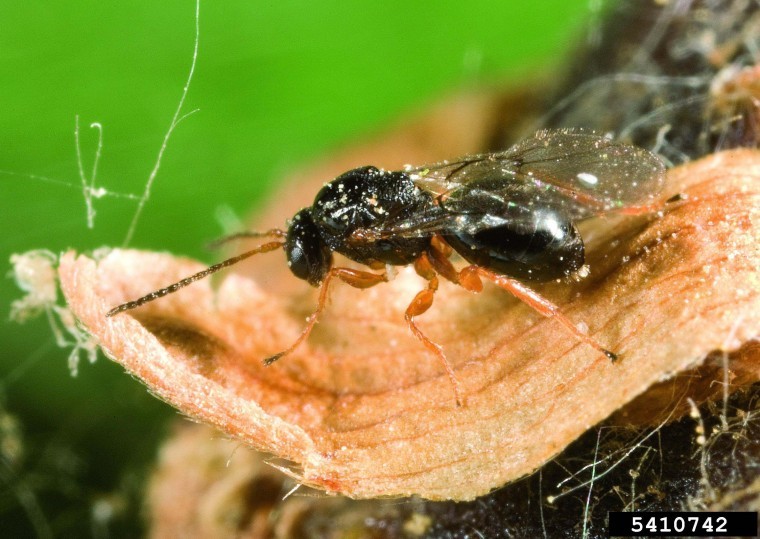Oriental chestnut gall wasp (OCGW), a pest of sweet chestnut trees first found in the UK in 2015, has been spotted in South East England.
The impact of OCGW on sweet chestnut in this country is low. It poses no threat to people or animals, nor does it affect horse chestnut trees. It can weaken sweet chestnut trees and make them vulnerable to other threats, such as drought or other pests and diseases. England’s chestnut production industry is small, with the great majority of the chestnuts consumed in Britain imported, so supply will be unaffected.
Forestry Commission surveyors have found the species at several localities in and close to London, as well as at Farningham Woods in Kent, which was the first site found last year.
The survey across South-East England will continue into August, supported by volunteer tree health surveyors from the Observatree initiative. Andy Hall, plant health manager for Forestry Commission England, said: “Protecting our country from plant pests and diseases is important for our economy, environment and health, and we and our partners in government are committed to protecting our borders from pests and diseases, and building the resilience of our trees and plants.
“The Government has invested more than £21 million into tree health research, has robust plans to deal with threats, and frequently reviews measures to minimise spread and impact.”
Mr Hall said experts are looking into long-term solutions to control populations of the tiny insect, which is less than 3 millimetres long, and added: “We cannot eliminate all risks, but we will work closely with partners and landowners in affected areas, and we are monitoring biological control trials in other countries, and researching whether these could be used in the UK.
“Meanwhile, we are encouraging sweet chestnut owners to keep an eye on their trees and report any suspected sightings using our Tree Alert pest reporting tool.”
The Forestry Commission is also encouraging anyone visiting or working on woodland sites to practise good biosecurity by not removing twigs, leaves and branches, to avoid accidentally spreading the pest further afield. This includes cleaning clothes, footwear, tools and machinery before moving to other sites.
More detailed biosecurity guidance is available from the Forestry Commission website at www.forestry.gov.uk/biosecurity
For more on OCGW, including a guide to symptoms, visit www.forestry.gov.uk/gallwasp
People can report sightings using the Tree Alert on-line information-gathering tool on the Forestry Commission’s website at www.forestry.gov.uk/treealert Tree Alert helps the Forestry Commission gather information about the health of the nation’s trees, woods and forests by reporting signs of tree pests and diseases of concern.
Before reporting a sighting, please check it’s a sweet chestnut tree – there is no need to report galls on other trees – then check the symptoms.
People who cannot use Tree Alert may report sightings by email to tree_health_england@forestry.gsi.gov.uk (preferred) or by telephone to 0300 067 4000.
Reports of suspected cases in traded trees should be routed directly to the Plant Health & Seeds Inspectorate helpdesk – tel: 01904 405138; or email: planthealth.info@apha.gsi.gov.uk
Further information is also available from Observatree, a tree health early warning initiative. Led by Forest Research, the Observatree partnership’s network of 200 trained volunteers support government tree health officers and scientists by surveying trees and helping to process and verify tree health reports received. See www.observatree.org.uk for more details.




